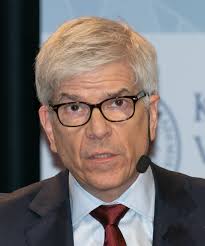In 2009, Nobel Prize laureate and former Chief Economist of the World Bank Paul Romer proposed the concept of ‘charter cities.’ In contrast to special economic zones, charter cities were envisaged as quasi-sovereign units located within existing states which were to be maintained by a foreign guarantor nation or nations. This arrangement would not merely construct a separate economic framework for the designated territory, but also establish a legal and political system autonomous from the host state. This, Romer believed, would create city-scale epicentres to stimulate economic development within the Global South. This piece examines Romer’s project and questions the immediate feasibility of such a project by taking into account the ‘stickiness’ of ideas regarding the territorial sovereign state.

Since 2009, the idea of charter cities has ostensibly accrued traction. Not only have proponents founded a Charter Cities Institute, but notably, heads of state in Honduras and Madagascar proceeded to act on Romer’s proposal, suggesting that “the concept has moved from theoretical and scholarly discussions to reality.”
More recently, the concept has re-emerged as a topic of speculation in 2020 following discussions between property developer Ivan Ko and the government of Ireland, with the former proposing the construction of a safe haven in the form of a semi-autonomous city in Ireland—one which would allow for the emigration of thousands of Hong Kong residents. Indeed, Mark Lutter, the Founder and Executive Director of the Charter Cities Institute, contended as recently as July 2020 that the “[t]he charter cities moment is here!”
Detractors have already presented legitimate assaults against the charter city concept on normative grounds, whether critiquing it as a type of colonial redux or a form of neoliberalism on ‘viagra’. Others have challenged its practical feasibility. While recognising the obvious technical challenges, Romer argued that there was in essence “no impediment, other than a failure of imagination,”, to realising the ideal of charter cities. Romer is correct to suggest that ‘imagination’ can offer prospectively influential alternatives to ordering political space. However, the idea of territorially-bounded sovereign states—the mainstay of how the modern world is conceptualised and indeed organised practically—provides a powerful countervailing force independent of technical impediments.
Hendrik Spruyt argues that the organisational superiority of the sovereign state allowed it to endure over other rival forms of political organisation, such as city-states, that increasingly declined between the fifteenth and seventeenth centuries. The prominence of the sovereign state has only been further augmented following its effective, albeit gradual, universalisation since the Second World War and the movement towards decolonisation. Evidently, hybridised forms of sovereignty have never entirely ceased, whether it be the Congo Free State formed in the late nineteenth century or current arrangements surrounding such territories as Guam or Hong Kong. Still, in the contemporary international system, these entities are exceptions to the norm, not a commonly accepted and pervasive mode of ordering political units.
While the taxational and warring capacities of the sovereign state were integral to its ascendance, charter cities are intriguingly presented as a new frontier in political organisation warranted by the ills of underdevelopment. As Lutter phrases it, charter cities offer “a promising solution to the challenges of poorly managed urbanization and poverty.” Whether such challenges will stimulate radical efforts to reconceive political space in the form of charter cities remains, however, presently undetermined.
Naturally, proponents are seemingly cautious to avoid presenting charter cities as a radical rupture in the sovereign states-system, indeed construing such cities as but “the next generation of special economic zones.” Responding to accusations that charter cities abrogate the sovereignty of developing states, Romer insists on the voluntary nature of charter cities, which are founded via the grant of the sovereign legal authority which controls the territory in question. This, according to Romer, distinguishes charter cities from colonial possessions acquired through coercion. It is also distinct from the potentially contentious idea of an international trusteeship in that the latter is founded by, and derives its authority from, the international community, whereas charter cities are predicated solely on authorisation by the sovereign host state.
However, a key point underestimated by proponents pertains to the inextricable link between modern conceptions of sovereignty and territoriality. For instance, a 2012 amendment to introduce charter cities in Honduras was overturned by the Honduran Supreme Court on the grounds that it violated national sovereignty and was thus “unconstitutional.” Similarly, Malagasy President Marc Ravalomanana, an enthusiastic supporter of Romer’s charter cities model, was ousted before tangible actions were made to construct such a city. While Ravalomanana’s removal was precipitated by an agreement wherein the president signed over approximately half of the country’s arable land to South Korean corporation, Daewoo, the Malagasy case nonetheless highlights the inflammatory nature of issues relating to sovereignty and territory.
In a recent study on the historical role which ‘company states’ (e.g. English and Dutch East India Companies) had in the formation of the modern international society, Jason Sharman and Andrew Phillips speculate on the prospects of hybridised corporate and neo-medieval entities in the present international order. They ultimately derive the conclusion that the “hostility” which charter cities “have consistently provoked” demonstrates the “stickiness of the state, and the deep resistance to deviations from this form.”
None of this is to suggest that charter cities are an impossibility. Conceptions of sovereignty are obviously not static, as even a cursory reflection on the nineteenth century ‘standard of civilisation’ or the fledgling norm of the Responsibility to Protect suggest. Simply then, contemporary understandings of territorially-bounded sovereign states are accompanied by a certain stickiness which inhibits radical projects to the contrary, yet such a conception is not intrinsically immutable. Indeed, it is perhaps the difficulties of locating suitable foreign guarantors, issues of democratic deficit, and logistical matters, among others, which provide more perennial challenges to the charter cities project. Yet without accounting for the reconceptualisation of sovereignty which such a project demands, it is certainly more probable that charter cities will therefore remain an elusive figment of the political imagination.






